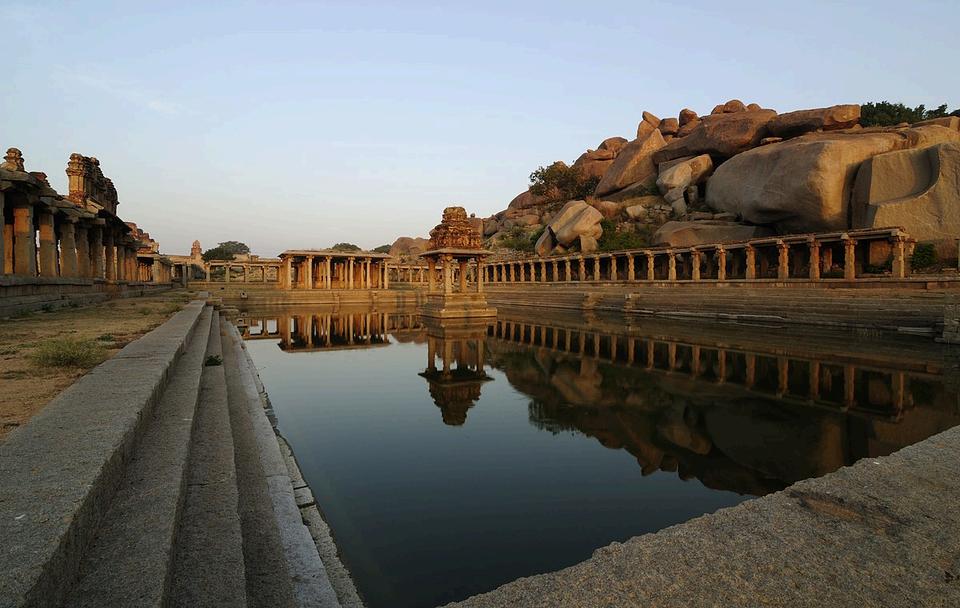A Quarterly Newsletter by APTi South Asia
INSIDE THIS ISSUE
Best Foot Backwards A Historic Preservation Podcast

In conversation with Saranya Dharshini
Preserving Heritage, Restoring Legacy
Institutionalizing Heritage
A collaborative effort of The Rainwater Project and SAHE (Society for Advancement of Human Endeavours), led by Ar Kalpana Ramesh, the ‘Water Warrior’ of India
Book discussion
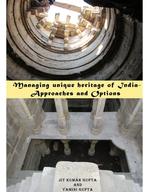
Featuring review of book: Managing Unique Heritage of IndiaApproaches and Options
Starting Young to care for the Old Project Announcement: Mission for Indian History and Archaeology
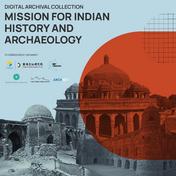
A collaboration between Five Cross Architects, the University of Tokyo, the Aga Khan Documentation Centre and MIT Boston (Archnet)
Call for Opportunities
Jobs, events and more

“IN DEEP WATER"
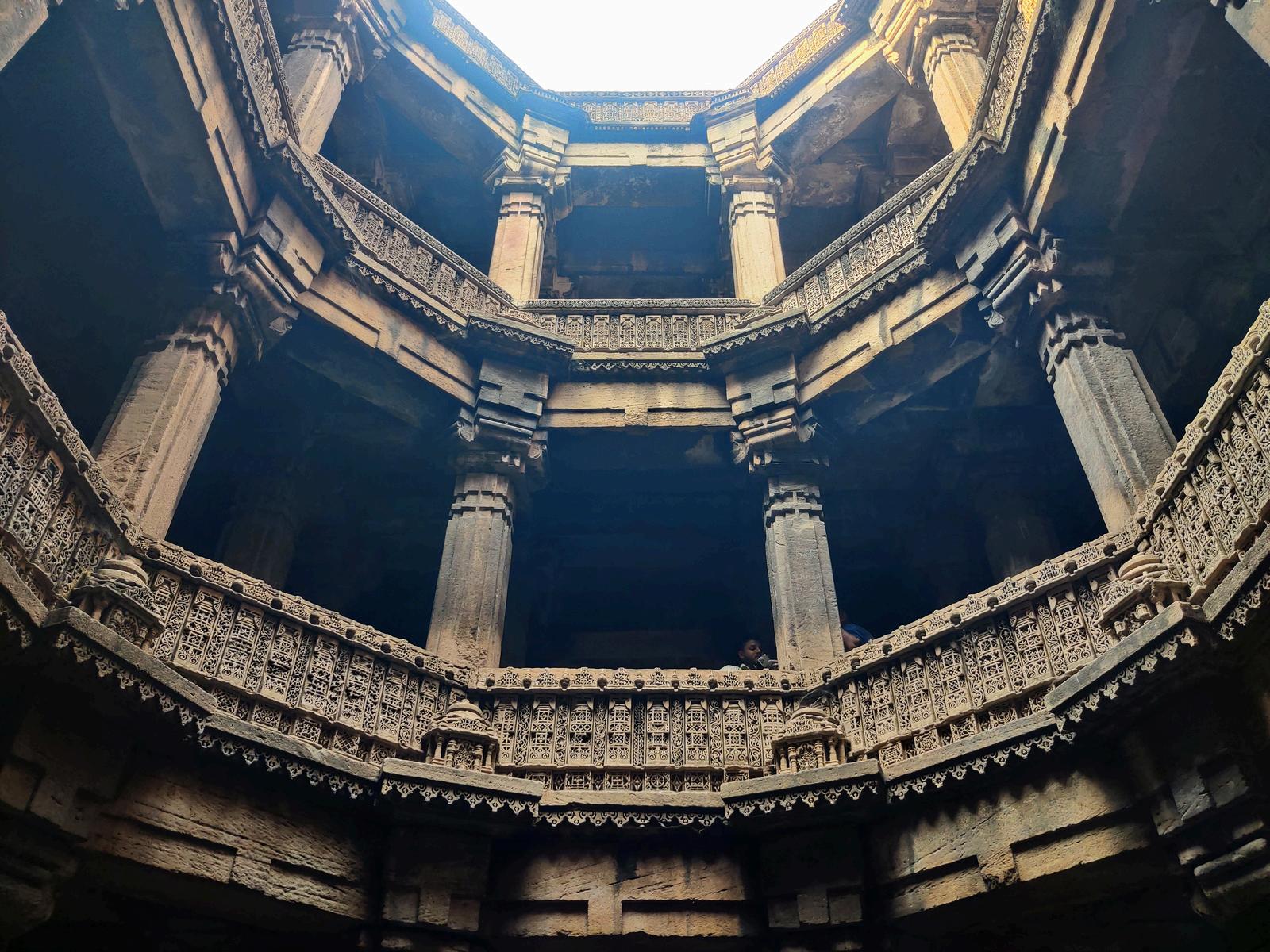
Water has always been a cornerstone in the development of civilizations, shaping their growth, and culture. Historically, thriving civilizations have emerged in regions blessed with abundant water resources, as access to water ensured agriculture, trade, and daily survival. However, in areas where water was scarce, societies demonstrated remarkable ingenuity by devising efficient water management systems and architectural solutions to overcome these challenges reflecting the advanced understanding of engineering and sustainability of the time.
This edition of the APT South Asia Chapter’s publication, The Heritage Issue - “In Deep Water” explores the intricate and multidimensional connection between water, architecture, and its conservation, highlighting how water management has shaped heritage across South Asia.
Dive in to learn more!

South Asia
THE HERITAGE ISSUE
A Quarterly Newsletter by APTi South Asia
From the Editorial Team
This edition of the Heritage Issue dives into the theme of ‘In Deep Water’ focusing on water conservation. The articles in the newsletter features the multidimensional relationship of humans with water, architecture and its influence on the development of our society. A particular focus is placed on the engineering brilliance of South Asian countries, showcasing their innovative water management systems, including stepwells, underground water tanks, and functional drainage systems.
The article of Institutionalizing Heritage highlights the pivotal role of individual organizations in driving preservation efforts. The article features the work of Ar. Kalpana Ramesh, a conservation architect and an environmentalist who is also known as the ‘Water Warrior’ of India. As the founder of The Rainwater Project, her studio has restored and revitalized various stepwells across the state of Telangana and continues to work towards conservation of all the stepwells across the Southern India. The project aims to achieve water self-reliance through sustainable water management practices aligning to UN and Indian SDGs (Sustainable Development Goals).
Adding another layer of insight is a podcast with Ar. Saranya providing an engaging discussion on her impactful work in water conservation and the role of vernacular architectural systems of South Asia in the water management of the areas.
A noteworthy addition in the section of ‘Starting Young to care for the Old’ is a feature of efforts of the Five Cross Architects and their project launch - Mission for Indian History and Archaeology. The digitized collection offers a unique lens into a collection of 750 monuments varying from mosques, tombs, graveyards, waterbodies and other monuments that have since been demolished, altered, or subsumed into the urban landscapes.
Lastly, the review of book ‘Managing Unique Heritage of India: Approaches and Option’ authored by Jit Kumar Gupta and Yamini Gupta, reviewed by Prof. Michael Tomlan sheds light on a collection of individual essays, including a compelling chapter on the water structures in Jhunjhunu District, that delves into the use of traditional water systems such as bawdis and johads.
- Khushi Shah
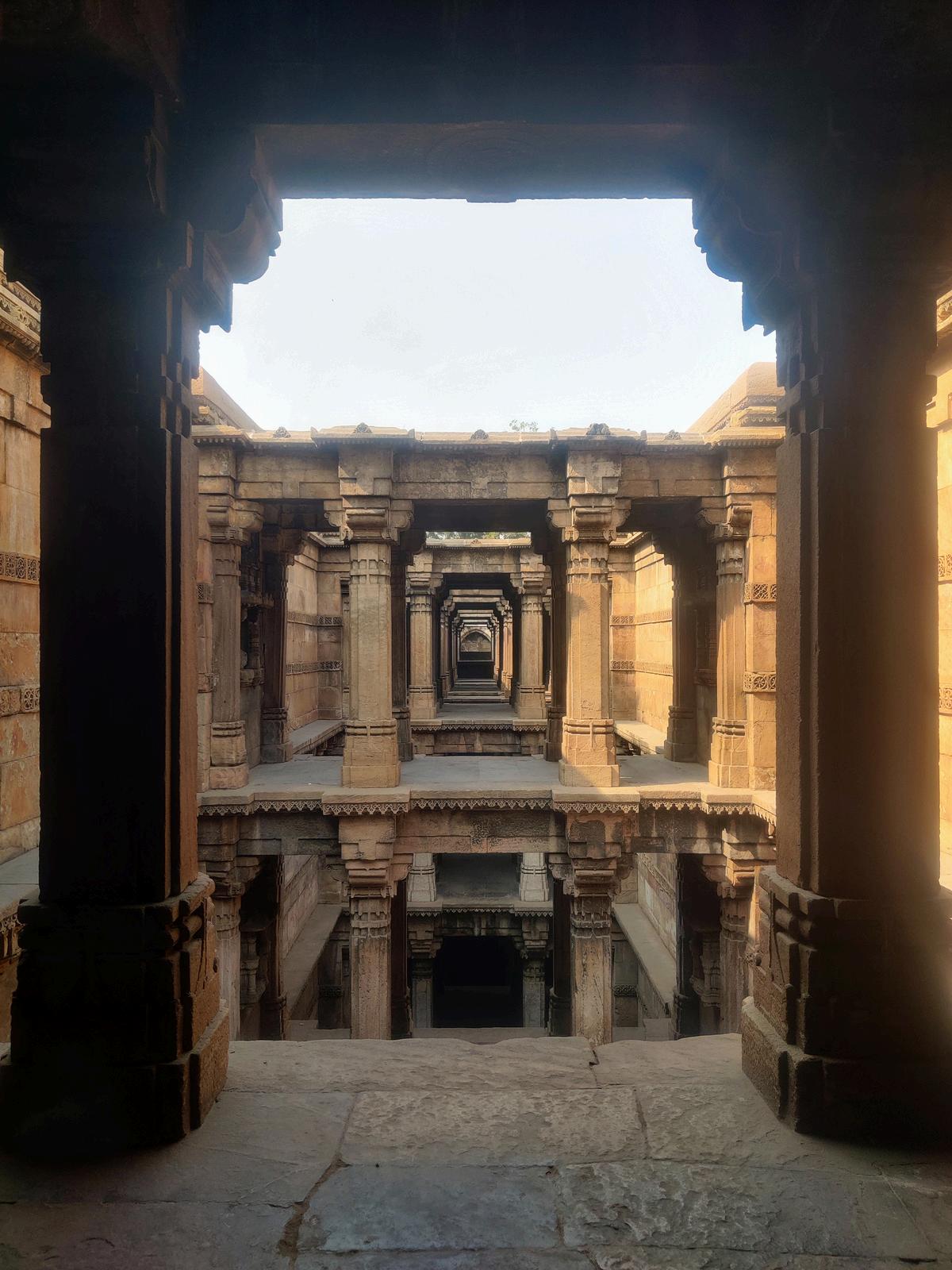
THE HERITAGE ISSUE
"Preserving Heritage, Restoring Legacy"
Text by Anuradha Venkatnarayan Images by The Rainwater Project
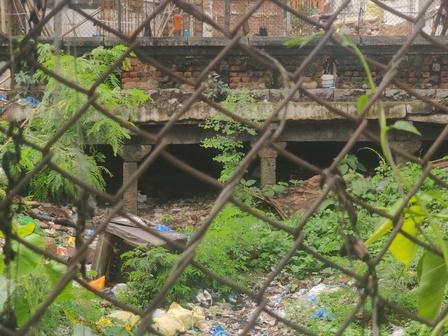
Stepwells were an integral aspect of subterranean architecture in western India from the 7th to the 19th century, admired today for their grand scale, engineering brilliance, intricate carvings, and other remarkable features. However, the magnificent stepwells of Telangana, a state in southern India, remain relatively obscure. The semi-arid region of Telangana in the Deccan plateau is also dotted with Baavis (wells), Baolis (stepwell), Kuntas (tank) and lakes that historically ensured supply of water throughout the year to counter the region’s almost absolute reliance on rainfall for accrual of groundwater and sustenance. These stepwells, adorned with pavilions and intricately carved pillars, stand as enduring testaments to the ingenious water conservation practices of the past. The shift to modernity and piped water supply has reduced people’s reliance on these heritage structures which caused most of these subterranean edifices to fall into disrepair and ignominy. Yet, the potential impact of these water conservation structures in the past is undeniable and increasingly so in the present-day context.
The rise of concrete buildings, paved surfaces, and poor planning has depleted groundwater while ironically causing urban flooding. Transporting river water as a solution is unsustainable and leaves a significant carbon footprint. Instead, rainwater harvesting, rejuvenating water bodies, and educating people on water conservation can positively address the issue.
Kalpana Ramesh also known as the ‘Water Warrior’, a designer turned environmentalist is the founder of The Rainwater Project. She believes that bringing back the reverence for the life-giving natural resource is the way forward. The maxim that channels Kalpana, is “I am water”. Just as water finds its way despite any obstacles, she flows on steadily against all odds. In Telangana, she is responsible for 25 stepwell restorations. Noteworthy among them are the Bansilalpet stepwell, the 3 stepwells in Rashtrapati Nilayam, the Bhiknoor temple stepwell, the Lingampet stepwell and the latest to be restored, the Machirevula stepwell.
The restoration of the Bansilalpet stepwell is a remarkable example of a project that successfully changed an abandoned monument into a tourist attraction; and transformed itself as a venue for cultural performances that has seen many musicians and dancers enthral the audience.
THE HERITAGE ISSUE
A Quarterly Newsletter by APTi South Asia
While there is not much archival information available on this stepwell, it is believed that stepwell was probably built during the 17th century CE. It was mentioned as Naganah Kunta in a 1954 map published by Pharaoh & Co. In 1933, Britisher T.H. Keyes developed a planned model village surrounding the stepwell which was funded by a local businessman named Seth Bansilal, and hence the present name — Bansilalpet stepwell.
Over time, as new urban systems emerged, the stepwell was abandoned and turned into a dumping ground for waste and garbage for decades. A revival plan, initiated by The Rainwater Project under Kalpana Ramesh's leadership, transformed into a significant urban development initiative with support from Telangana Municipal Administration and Urban Development (MAUD), SAHE (Society for Advancement of Human Endeavours), and Arvind Kumar IAS. This stepwell now has a water experience centre, a museum that documents the restoration process and exhibits the objects excavated from the stepwell and draws numerous tourists with various cultural events being hosted there.
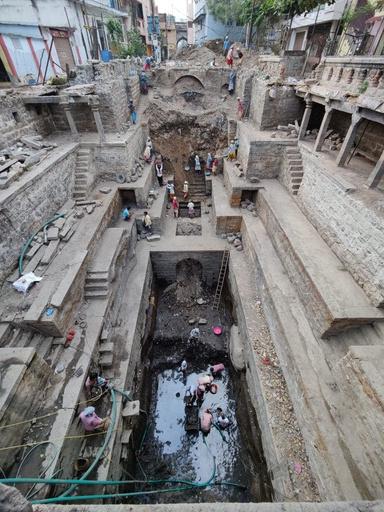
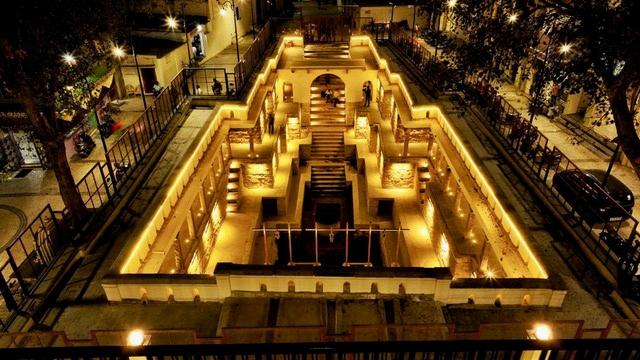
THE HERITAGE ISSUE
Stepwells were multifunctional structures that served as vital water reservoirs as well as social hubs. They provided vibrant gathering spaces for festivals, rest stops for travelers, and settings for domestic activities. Additionally, they held significant social value, as women—primarily responsible for fetching water—used these spaces to interact, exchange pleasantries, and foster community connections. The historical stepwells in Telangana can thus be restored to their erstwhile status as social and cultural centres.
Kalpana strongly advocates that a transformative change is brought through the conscious shift or growth in the patterns of behaviour. When systemic changes rise from grassroot level, they drive progress up the evolutionary pyramid, leading to meaningful and effective transformation. In order to bring the people back to these historic places that have seen ages go by, there needs to be a conscious effort to develop these sites as a venue for cultural performances, art exhibitions, or simply a place for social gatherings. This aids in bringing back the lost connection and helps with forming a renewed perspective about these traditional water systems.
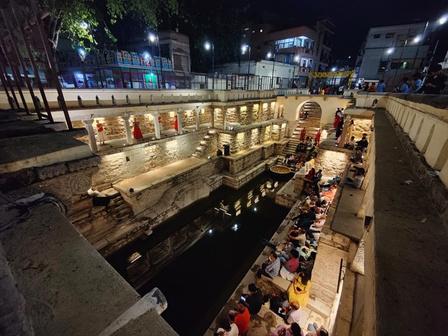

When the dots of heritage, water and culture are connected and linked to the present-day context and the community, the strength of perception increases manifold. It enables people to connect with historical structure not just as an age-old structure, but also as a traditional wisdom passed down from generations. While a standalone restoration project is an admirable achievement, it cannot sustain itself unless a circular economy funds it. This collaborative project serves as a powerful example of how institutionalizing heritage through strategic partnerships can lead to sustainable, long-term impact. By bringing together diverse stakeholders, including government bodies, non-profits, and dedicated individuals, it demonstrates the potential of collective efforts to revive neglected heritage sites. Many more magnificent stepwells exist in Telangana that could amend the water footprint for a better future. While some have been rescued from being filled in and converted into a parking lot, a few have not escaped the clutches of modernity. It is vital to bring back the language of sustainability and traditional water wisdom in order to incorporate the legacy of stepwells back into our lives.
THE HERITAGE ISSUE
Water and water heritage is truly universal and transcends any geographic boundary or time period.
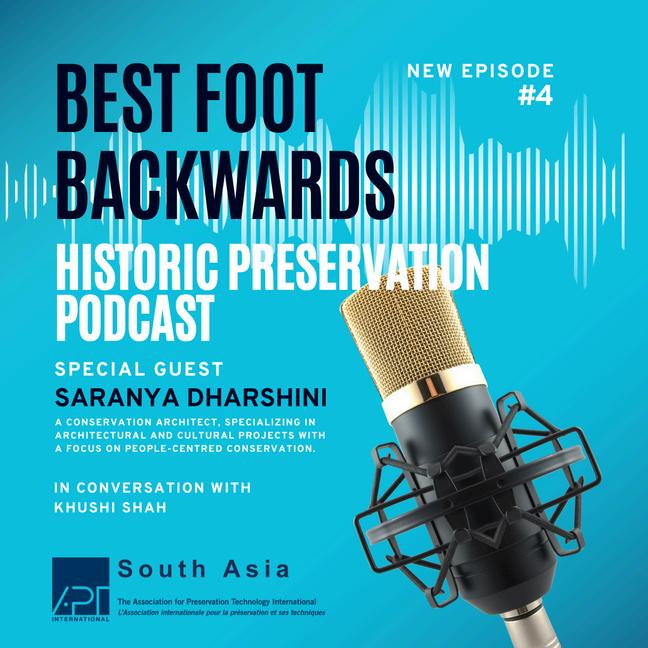
In our fourth podcast "Best Foot Backwards", we talk to conservation architect Saranya Dharshini about her experience in water conservation, the diverse aspects of the water heritage in India and South Asia at large, the global conservation efforts, etc.

”
Book recommendations for water conservation, particularly within urban or historic contexts:
The Water Industry as World Heritage by James Douet
Water Heritage MaterialConceptual and Spiritual material by Willems, Willem J.H., Van Schaik, Henk P.J, UNESCO
Adaptive Strategies for Water Heritage - Past, Present and Future
Open access book by Springer Best Foot
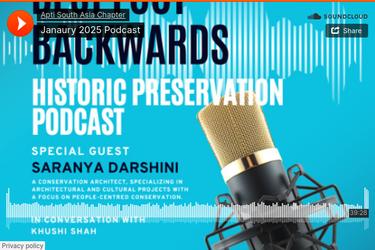
THE HERITAGE ISSUE
Special Feature - Starting Young to care for the Old
Text by Ar. Adil Dholakia and Ar. Vishakha Gangar
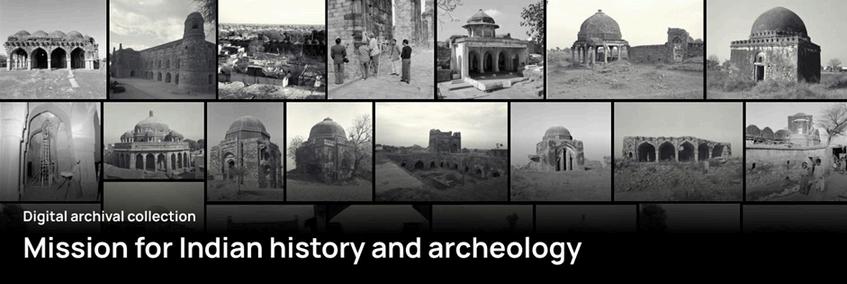
Project Announcement: Mission for Indian History and Archaeology: A collaboration between Five Cross Architects, the University of Tokyo, and the Aga Khan, Documentation Centre at MIT Boston (Archnet).
How can one ensure that important archives from yesteryears are available for the next five, ten, or even hundred years?
Digital preservation is a moral and cultural imperative, safeguarding the collective memory of humanity in an age where physical and digital vulnerabilities threaten the longevity of documentary heritage. The value of such data is solely determined by how accessible it is to stakeholders and how long it will stay authentic. These abilities leads to an information-rich atmosphere that improves the validity in this age of misinformation. It also ensures resilience against natural disasters, technological obsolescence, and physical decay. Along with the architectural and cultural achievements of civilizations they provide insights into their social, political, and technological contexts.
Preserving such records goes beyond academic research; it nurtures interdisciplinary collaborations, strengthens local identities, and ensures that heritage remains a vital part of contemporary discourses.
Archives are the evidence of historical authenticity and cultural identity. They hold the power to educate, inspire and connect people across time and space. A well-preserved archive allows for a nuanced understanding of the past, enabling critical interpretations for thoughtful interventions.
Five Cross Architects started as a confluence of five channels: Heritage, Urbanism, Architecture, Art and Culture; to foster meaningful connections between communities, cultures, and their environments. The practice focuses on heritage revitalization, aiming to preserve authenticity and integrity while enhancing quality of life.
THE HERITAGE ISSUE
A Quarterly Newsletter by APTi South Asia
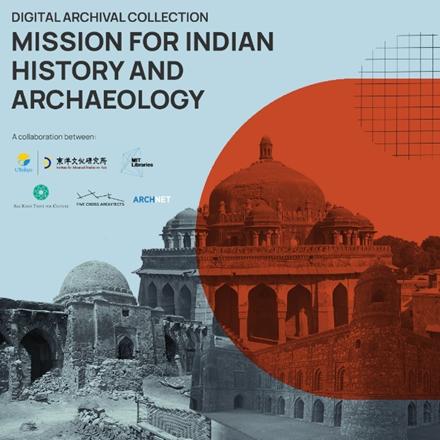
Originally created and today hosted by the University of Tokyo – Mission for Indian History and Archaeology (1959-1962), this extensive documentation of Indian Islamic architecture from the Delhi Sultanate period (1191-1526 CE) includes a repository of over 40,000 artefacts including - photographs, drawings, field notes, and inscription tracings offering a detailed account of medieval Islamic architecture in India.
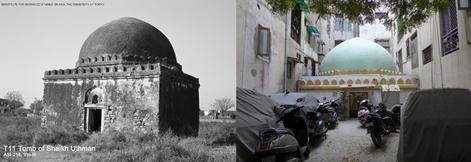
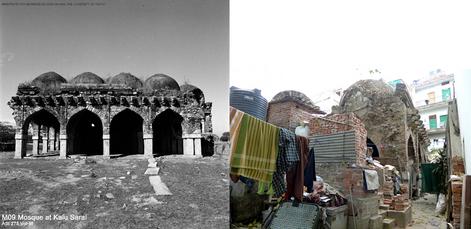
In a first-of-its-kind collaboration, governed by an MoU and a CC BY-NC copyright license, 4 international institutes the Five Cross Architects, the Research and Information Centre for Asian Studies (RICAS) at the University of Tokyo, a Memory institute – The MIT Library Boston and the Aga Khan Documentation Centre (AKDC) came together to protect and disseminate this rich archival collection. The principles of digital preservation and archival studies find concrete application in our collaborative project to safeguard an important archival collection. This project initially stemmed into light during Adil’s (Director, Five Cross Architect) internship in Cairo in 2022. What started as a conversation for a coffee table discussion with Dr. Naoko Fukami soon took more heights as other more collaborators joined in. The idea was shared with Mr. Shiraz Allibhai, Deputy Director of the Aga Khan Trust for Culture (AKTC) whose support and enthusiasm led to a partnership with Boston’s MIT Libraries and AKTC’s digital repository – Archnet. This was followed by series of visits to Cairo, Tokyo, and Kyoto which enabled meaningful exchanges with project team members, fostering a collaborative spirit that became integral to the project’s various milestones. Under the banner of Five Cross Architects in India the project stands as a refined example of the impact of global partnerships.
THE HERITAGE ISSUE
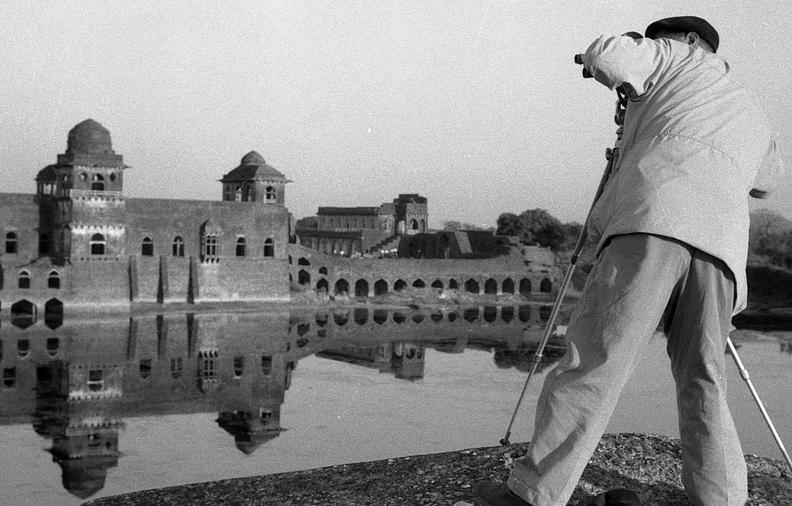
Jahaz Mahal, Mandu; ( Source - Archival collection of Mission for Indian History and Archaeology, University of Tokyo, in 1959-60, 1961-62)
This collaboration focused on cataloguing, managing and representing the archival data making it accessible to a much larger group of people globally.
The first critical step of the project consisted of digitizing the available data and then duplicating that onto solidstate drives (SSDs) and relocating and safeguarding them from potential natural disasters native to Japan.
These actions ensured a proactive and resilient preservation strategy for this repository. The project then prioritized meticulous categorization and indexing. Management strategies focused on updating and creating efficient metadata systems. Re-presentation involved curating these archives and corelating them according to the filters of time, period, typology and classification. This large repository of data serves as a foundation for comparative studies and new interpretations, enriching the field of architectural and historical research for various professions from Students and Academicians, Architects, Urban Conservators, Art Historians, Research Scholars, Program Developers, Archivists and Librarians etc.
With over 40,000 artefacts already digitized in various phases of the project, it is now in it’s second leg where digitized data is now ready for dissemination. As a pilot launch of the project, 20 monuments from the Delhi Sultanate Period varying from Mosque, tombs and other fortified monuments are uploaded on Archnet . This accounts to about 20 of the 750 monuments, an average of about 850 artefacts are now available for audience to view on archnet.
Simultaneously, the project also aims to conduct a lecture series, academic talks, and exhibitions designed to promote responsible archival re-presentation. Associated Exhibitions aspire to offer an immersive and free access experience of the archival material.
The integration of the collection into the framework of Archnet.org has transformed these static records into dynamic, interactive resources enabling people to cross reference archives and study parallel and corelated data for further interpretational studies. The project seeks to lay the groundwork for future collaborations while ensuring that historical narratives continue to inform and inspire future generations.
Link to the Uploads live on Archnet - https://www.archnet.org/collections/2840

THE HERITAGE ISSUE
Book Discussion - Managing Unique Heritage of India.
Text by Dr. Michael Tomlan
Authors: Jit Kumar Gupta, Yamini Gupta
The principle author of the book is a retired director of the College of Architecture at Universidad Nacional de Itapúa in Paraguay and founding director of the College of Architecture at the Institute of Engineering and Technology, Bhaddal in Punjab. Consultant on several master plans and contributor to books and technical papers on architectural education, affordable housing, sustainable development, and urban planning, he has written about the architecture and planning of Punjab and the heritage of Amritsar on previous occasions. The current eBook is a compilation of essays, each of which can be read independently. J.K. Kumar’s chapters repeat material to provide emphasis. The strategies and options for conserving the built heritage in India lead to their application in Amritsar. The first focus is on cities, which drive growth and development, generating wealth and social well-being. Urban centers give rise to ionic buildings, repositories of cultural heritage that reflect the personality of a community.
Approaches and Options
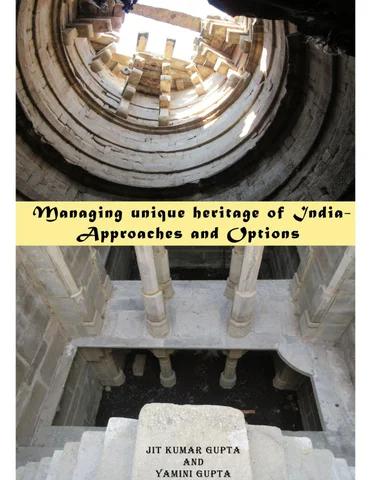
The legal framework in the state of Punjab specifies that the built heritage is “Any structure, erection or monuments . . . or place of internment or monolith which is of historical, archaeological, or artistic interest which has been existence for not less than one hundred years.” J. K. Gupta questions this time limitation because it leaves aside so many properties that are character-defining features of a location. He also writes that the state should strengthen the town planning laws and other legislation to directly support designated properties and heritage zones to preserve urban heritage. To protect the heritage, the heritage regulations should be distinct from building bylaws and be enacted and implemented on the patterns of Hyderabad and Mumbai for special precincts. Heritage Commissions should involve community advocates to identify the assets and understand the importance of community values, take positive action, develop partnerships, and promote best practices.
The second and principal focus is on Amritsar, the capital of the Punjab, a city with over one million people and a premier border town. At the core is the Walled City, with an area of 350 hectares, constituting 2.4 percent of the metropolis, housing about 17% of its population.
THE HERITAGE ISSUE
A Quarterly Newsletter by APTi South Asia
The Walled City is the heart and soul of the city and the hub around which the social and economic fabric revolves. The Golden Temple, Jallianwala Bagh, the Mosque of Khair-Ud-Din, the Mosque of Mohammed Jan, bungas, havelis, narrow streets, and specialized markets make it the cultural hub of Amritsar.
Yet, old buildings are being demolished and new ones constructed with incompatible glass façades. Residential areas are converted into commercial complexes, undermining the pedestrian character of the city. The author fears that, without sufficient care, more multistory parking and automobile access will destroy the positive relationship that heritage tourism can offer.
Two chapters offer additional perspectives to the compilation. Assistant Professor of Architecture Yamini Gupta, in the Chitkara School of Planning and Architecture, assisted by co-authoring with J. K. Gupta, contributes a chapter on the water structures in the Jhunjhunu District, a predominantly agricultural area. The predominant types used for water harvesting are the bawdis (stepwells) and the johads (community-owned wetlands). The former is designed to serve drinking water and remains protected. The vertical shafts with steps allow people to socialize and enable religious activities. The latter store water in the open and are used for washing, bathing, and meeting the needs of animals. Because many of these structures are in poor repair, the maintenance needs are obvious and require educating the community about their importance.
Two authors contribute to Chapter Seven on the haveli of Punjab: Dr. Bhupinder Singh, Professor and Head of the Department of Architecture and Planning at Maharaja Ranjit Singh Punjab Technical University in Bhatinda, and Dr. Prabhjot Kaur, Professor and Director of IKG PTU Camus, Mohali. Maps, plans, elevations, and photographic images prove the care given to their construction.
In addition, other chapters also lists the properties in India inscribed on the World Heritage List, the 1931 Athens Charter for the Restoration of Historic Monuments, and another containing the 1972 Convention Concerning the Protection of the World Cultural and Natural Heritage by the General Conference of UNESCO. Those reference documents may be less important than the chapter on heritage regulations. These include the model heritage regulations adopted by the Ministry of Urban Development, guiding the identification, grading, and listing of buildings and precincts. The implications for these listings include the owners’ responsibilities and the role of the public and private personnel who become involved following the well-known pattern set in the United Kingdom.
The bibliography consists of dozens of online sources that are easily accessible. In summary, as a free text for those who have access to the Internet, this compilation is one of the most accessible sources of information regarding heritage thought and policy. One could have wished for less redundancy and more detailed information with positive examples, but readers must wait for the author’s next book.
THE HERITAGE ISSUE
A Quarterly Newsletter by APTi South Asia
Call for Opportunities
APT Activities
NDTs in Conservation - Quiz Competition by APT-SAC
�� February 22, 2025 ��Online
Register at: https://forms.gle/TbMFXLUrb4y6bqwn6
For more information visit: https://www.aptsouthasia.com/
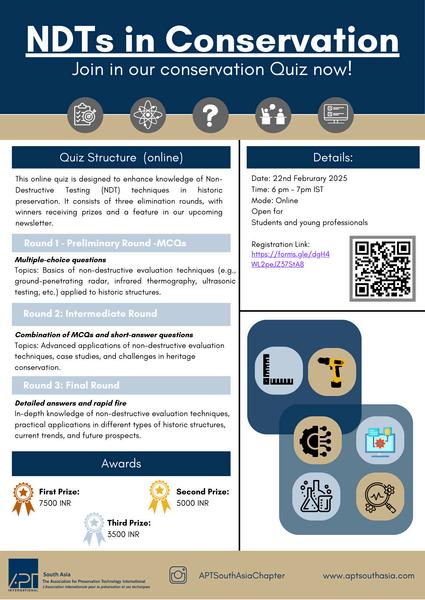
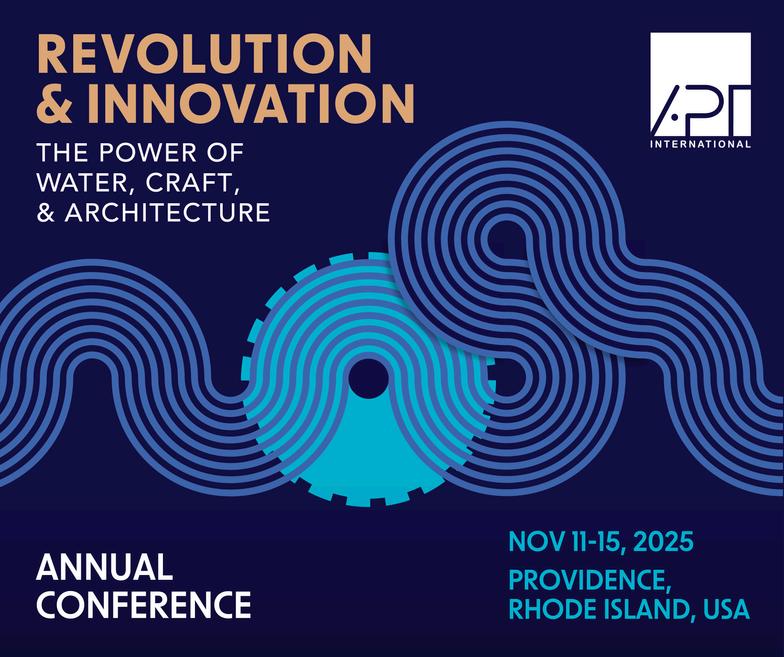
REVOLUTION & INNOVATION - THE POWER OF WATER, CRAFT, & ARCHITECTURE
This conference will explore how the power of water, craft, and architecture can be harnessed in Revolution and Innovation.
�� November 11 - 15, 2025 ��Rhode Island, USA
General Presentation submissions - February 4, 2025
APT Student presentation/scholarship applicationsFebruary 4, 2025
For more information visit: https://aptprovidence2025.eventscribe.net/
THE HERITAGE ISSUE
A Quarterly Newsletter by APTi South Asia
Call for Opportunities
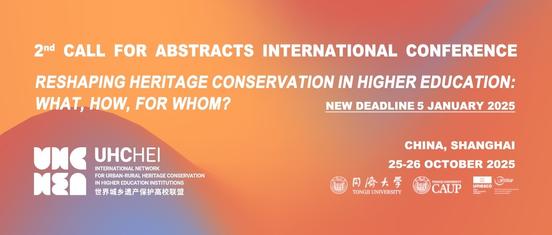
Youth Heritage Days in Spain
�� Albarracín (Teruel), Spain
�� March 26 to 30, 2025
this event is organised in the frame of the EUfunded European Heritage Hub pilot project and hosted by Hispania Nostra, ESACH and Europa Nostra.
Link for registeration: Click here
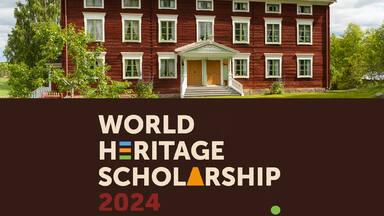
RESHAPING HERITAGE CONSERVATION IN HIGHER EDUCATION: WHAT, HOW, FOR WHOM?
�� Shanghai, China
�� 25-26 October 2025
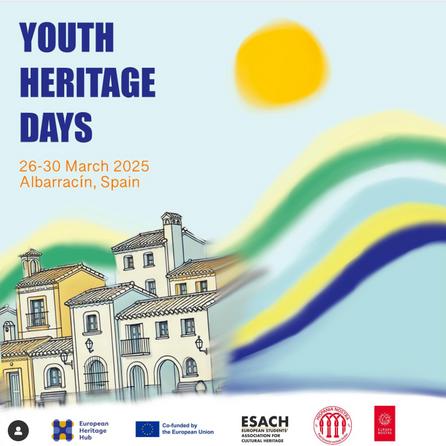
HERITAGE RESIDENCE SCHOLARSHIP 2025
The International Residence Scholarship for the World Heritage site Decorated Farmhouses of Hälsingland is aimed at those who have an artistic idea related to the UNESCO World Heritage list and are interested to connect the World Heritage site.
�� Deadline: 16 February 2025
�� Location: Sweden
Register Here: https://www.regiongavleborg.se
THE HERITAGE ISSUE
4TH GLOBAL HERITAGE CONCLAVE - 2025 ��Raipur (Chhattisgarh)
��5-6 May 2025
For more information. visit: https://www.heritagesociety.in/events/globalheritage-conclave-2025-bharataya-mathaparamapara
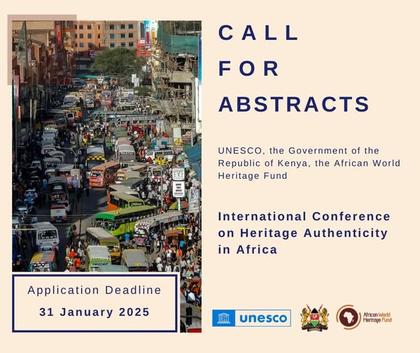
4 / 18 JANUARY, 2025
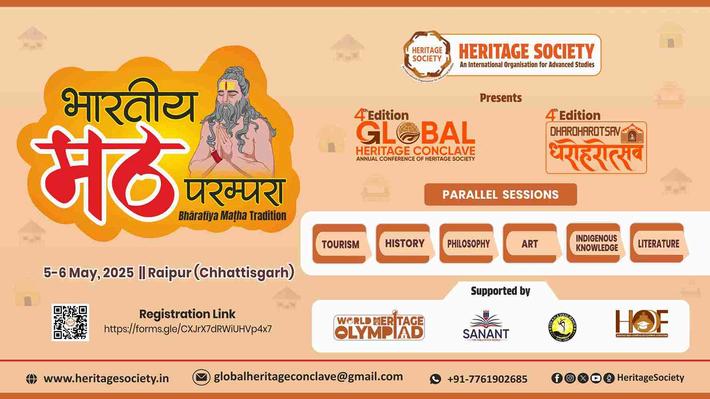
APPLICATIONS FOR INTERNATIONAL CONFERENCE ON HERITAGE AUTHENTICITY IN AFRICA
��Nairobi, Kenya ��5-6 May 2025
Deadline for submission of abstracts to the UNESCO Conference Secretariat: 31 January 2025:
For more information visit: https://www.whitr-ap.org/
NON INVASIVE STUDY AND RESEARCH APPROACHES FOR CULTURAL HERITAGE CONSERVATION �� Paris, France.
�� 29-30 January 2026
The 2026 International Symposium of SFIIC (French Regional Group of the International Institute for Conservation - IIC) is organized by all the Working Groups of SFIIC in partnership with INP (National Institute for Conservation).
For more information: https://sfiic.com/congress-2026-home-page-call-for-paper/
THE HERITAGE ISSUE
A Quarterly Newsletter by APTi South Asia
WORLD HERITAGE MANAGEMENT: PEOPLE NATURE CULTURE (PNC25)
PNC is the flagship course of the ICCROM-IUCN World Heritage Leadership Programme, open to site managers and coordinators, members of management teams and institutions, and heritage practitioners working with World Heritage properties and other heritage places around the world.
�� Deadline: 29 January 2025
For more information visit: https://www.iccrom.org/courses/world-heritage-managementpeople-nature-culture-pnc25
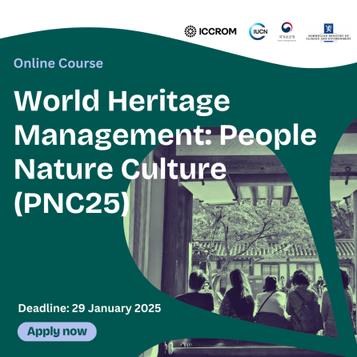
THE HERITAGE ISSUE
A Quarterly Newsletter by APTi South Asia
References:
4 / 18 JANUARY, 2025
Heritage structure | Hyderabad’s Bansilalpet stepwell: Ravaged, reimagined, then revived - Telegraph India
Architect & IAS Officer Revive 17th Century Stepwell That Stores 22 Lakh Litres of Water
APT South Asia Team:
Khushi Shah President
Vishal Joshi Social Media Coordinator
Brinda Gaitonde Nayak Vice-President and Editor
Divay Gupta Chapter Advisor
Dr. Michael Tomlan Treasurer
To contact the organizers, please email aptsouthasiachapter@gmail.com. This issue is edited by Khushi Shah
